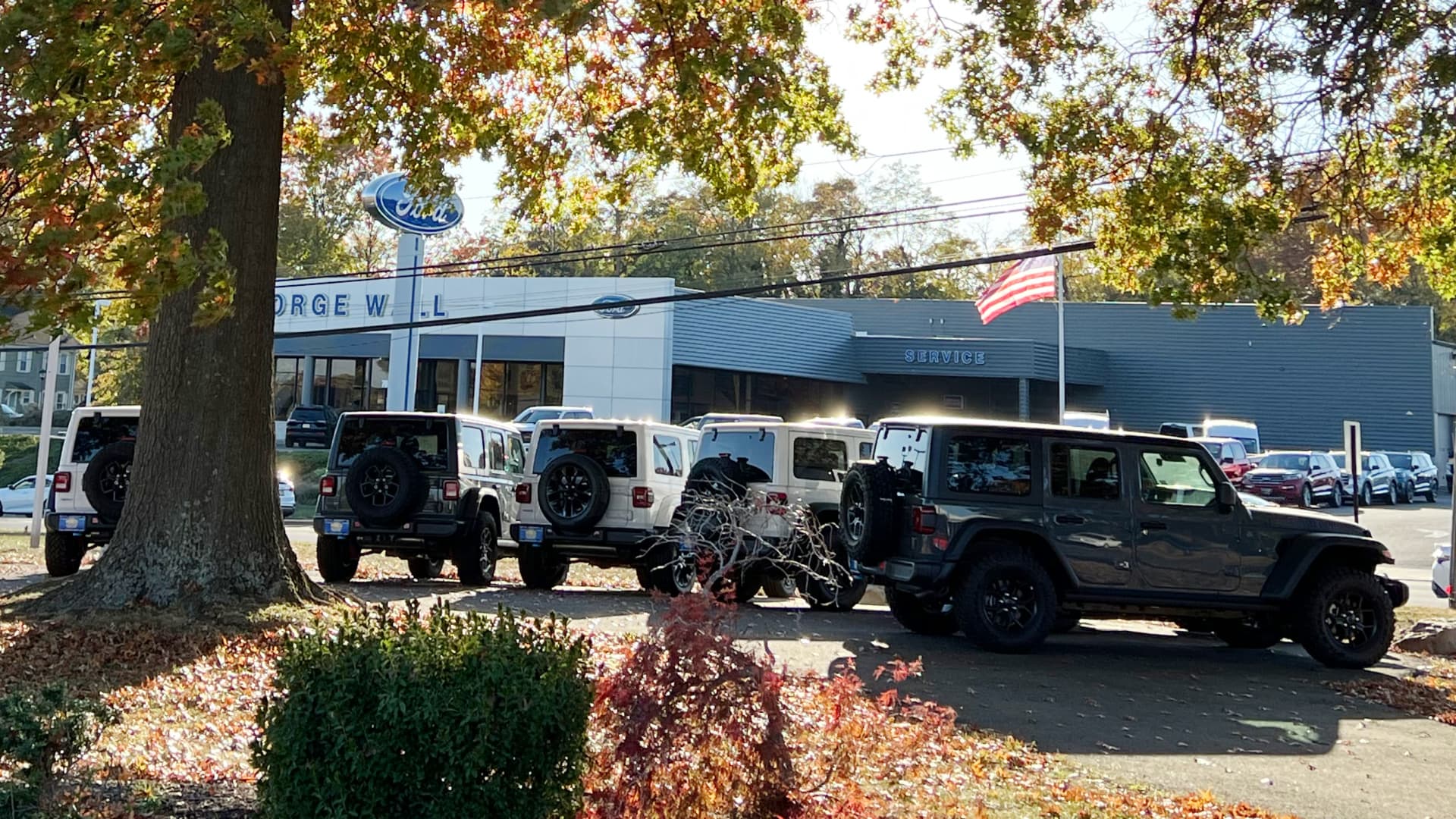
When I was a teenager, I bought my first car. It was one Toyota Tercel with a few hundred miles on it and costing less than $10,000. Granted, that was 30 years ago.
Now that I have a daughter turning 17, I envisioned a similar scenario. She’s been working — and saving — since she was 13, and I figured she could at least get a reasonably priced pre-owned model.
But boy, has the used car market changed. For starters, prices have skyrocketed.
Anyone who has stayed away from the car market in recent years is in for a big shock, Ivan Drury, Edmunds’ director of insights, told me. “It’s not like anything you were used to.”
For used cars, the average listing price is now $25,361, according to the latest report from Cox Automotive, a giant jump just five years ago, before the pandemic disrupted supply chains and drove up prices for new and used vehicles.
“Affordability remains a challenge for consumers and supply is more limited at lower price points,” the report said.
For new cars, the average transaction price is $47,823 since October, near an all-time high. There are fewer options available at lower prices. Spoiler alert: It’s nearly impossible to find a car for less than $30,000.
Now, 10% of all vehicles sold cost more than $70,000, up from 3% five years ago, according to Edmunds. Just 0.3% of new vehicles sold now cost less than $20,000, compared with 8% five years ago, Edmunds found.
Cars these days are loaded with high-tech features, including touchscreens, 360-degree cameras and heated seats, which have driven up prices significantly, according to Drury.
“Technology is infused throughout the dash and throughout the vehicle,” he said. “They’re so skilled, it’s borderline insane.”
Hunting for a used Jeep
A Jeep was at the top of my daughter’s wish list, and Wranglers, in particular, have held their value.
A recent iSeeCars study analyzed more than 2 million cars to see which used models have the lowest price and offer the longest remaining life. A 10-year-old Wrangler Unlimited ranked a respectable 18th among the SUVs on the list.
But the average price for a 10-year-old Wrangler is still $23,381, and older cars with more mileage will increase the cost of ownership, experts say.
Plus, we wanted something newer, since the 2018 Wrangler rolled out advanced safety features and made significant improvements in fuel efficiency and technology over older models.
That means paying more up front: A Jeep Wrangler “isn’t the cheap car from 10 to 15 years ago,” Drury said.
A Jeep dealership in Shrewsbury, New Jersey
Jessica Dickler | CNBC
Sites like Cars.com and Carvana have helped level the market, but prices were still high online. We had better luck looking for used inventory at dealers within a 50 mile radius of the house. A Jeep Chrysler Dodge dealership in Shrewsbury, New Jersey had two 2021 models that fit our criteria and budget.
According to Drury, it’s harder for car buyers to negotiate now that prices are more transparent. Dealers offer incentives, but are less willing to knock off the sticker price. “Because we have so much information, it’s very difficult to set a different price than your competitors,” Drury said.
More from Personal Finance:
2 in 5 cardholders have maxed out a credit card or are close to it
IRS reveals higher capital gains tax brackets for 2025
How to rethink money as the Fed cuts interest rates
The best bet is to snag a financing offer, he advised, which could mean saving money by securing a lower interest rate on an auto loan. The average interest rate on a four-year used car loan is currently 8.21%, according to Bankrate.com, but good credit scores often pave the way for significantly better loan terms.
However, we were able to negotiate some fees that were imposed at the point of sale.
In the end, however, we spent more than we originally planned – and that doesn’t include the added expense of insuring a teenage driver.
Subscribe to CNBC on YouTube.
